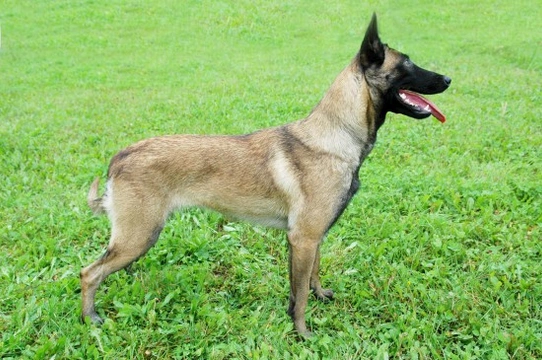
Longevity, health and hereditary conditions within the Belgian Malinois dog breed
The Belgian Malinois or “Mali” dog is also known in some areas as the Belgian shepherd dog, and is a medium sized breed with a long and distinguished working history. Dogs of the breed are used to guard the grounds of The White House and the American president, and they are also widely used by police forces and military dog units all over the world for working guarding roles, as well as within the private security sector.
The Mali dog stands up to 28” tall at the withers, and can weigh up to 34kg, with males being heavier than females. Due to the fact that the breed as a whole is more valued for their temperament and working ability than a particular appearance norm, different dogs of the breed can vary quite considerably in appearance. The breed overall has an instantly recognisable shepherd-dog conformation, and a similar build to that of the German shepherd. They can also be seen in similar colours to the German shepherd dog too.
If you are considering ownership of a Belgian Malinois dog, it is important to do plenty of research, both on the temperament and traits of the breed and their suitability as pets, and also on their health, wellness and any genetic problems within the breed. In this article, we will look at the longevity, health and hereditary conditions prevalent across the Belgian Malinois breed as a whole. Read on to learn more.
Belgian Malinois care and ownership considerations
The Belgian Malinois dog may make for an excellent working dog with the right training and handling, but they can be a great challenge to own as a domestic pet, especially without an experienced owner. They require clear, firm training with plenty of positive reinforcement, and an owner that is able to meet the mental and physical challenges of this intelligent, versatile breed.
The Mali needs to spend several hours per day exercising, and they require plenty of interaction and mental stimulation to be provided as part of this as well. Their coats tend to shed relatively heavily, and require regular brushing and grooming, and for all of these reasons, the Belgian Malinois should never be considered as an easy or obvious choice of pet.
Belgian Malinois longevity
The average longevity of the Belgian Malinois across the breed as a whole is 12-14 years, which places the breed towards the top of the rankings for pedigree breeds as a whole of a similar size.
Genetic diversity and breed-specific conformation issues
The Belgian Malinois breed has an inbreeding coefficient statistic of 2.8%, which is very low for a pedigree dog breed and goes some way towards explaining the relatively long lives of dogs of the breed as a whole. This is potentially due to the fact that the breed has widely been bred for, and valued for, their working ability, rather than a uniformity of appearance traits.
The breed’s conformation itself is not considered to present any particular problems in terms of the ongoing health, wellness or viability of the breed as a whole.
The Kennel Club and the British Veterinary Association recommend health testing of potential parent dogs from the breed to ascertain a propensity to certain hereditary health conditions that have an elevated occurrence rate. Hip dysplasia and elbow dysplasia testing is recommended, and it is also noted that the breed has something of a predisposition to hereditary cataract formation, and information on the eye health of parent dogs and their ancestors should also be maintained.
Known health problems within the Belgian Malinois breed as a whole
While the breed tends to be healthy overall and benefits from a wide range of genetic diversity within breed lines, certain conditions have been identified to recur within breed lines of Belgian Malinois dogs with a rather elevated degree of occurrence. These are listed below.
- Hip dysplasia affects a significant number of dogs of the breed, with the breed’s mean hip score being 8.3. Potential parent dogs should attain a hip score below this number in order to be considered viable for breeding.
- Elbow dysplasia is another noted problem within the breed; the ideal elbow score should be zero.
- Hereditary cataracts may present themselves within the Belgian Malinois, although these often do not become apparent until later life. Cataracts may affect one or both eyes, and are often operable, but do have a propensity to recur.
- Another eye condition within the breed is keratitis, which causes an inflammation of the cornea of the eye, leading to pain and irritation.
- Epilepsy also presents itself within the breed, and epileptic dogs should not be bred from and may not be suitable for working roles either. However, canine epilepsy is often manageable with medication.
- Certain types of cancer are recognised within the Belgian Malinois too, particularly haemangioma and seminoma.
- Acute renal failure in juvenile dogs of the breed, which is called glomerulocystic kidney disease, is also present within some breed lines.
- Finally, another condition that usually presents itself, if present, when the dog is young, is a condition called hereditary spongiform degeneration with cerebellar ataxia, which usually becomes obvious from as young as two weeks of age. This is a quickly progressing neurological degeneration, for which there is no cure.



